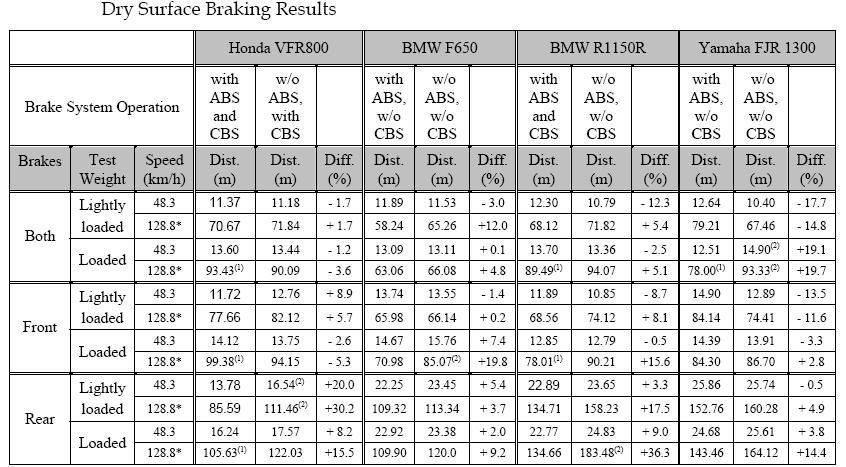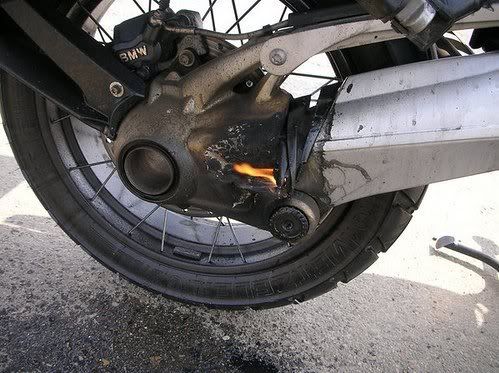The following is another data point. This is from a document off of the Motorcycle Safety Foundation's web site. To read the entire report
>>CLICK HERE<<
The opening text:
In 2003, the U.S. Department of
Transportation, National Highway Traffic
Safety Administration (NHTSA) in cooperation
with Transport Canada (TC) conducted a
motorcycle brake research project. The
objective of this testing program was to assess
the effectiveness of anti-lock braking systems
(ABS) and combined brake systems (CBS) on
motorcycles using various braking maneuvers
and loading conditions.
Testing was performed with six motorcycles,
representing the dual-purpose, sport, and sport
touring segments for motorcycles. The
following motorcycles were used in the tests:
1. 2002 Honda VFR 800 with ABS & CBS
2. 2002 BMW F650 with ABS
3. 2002 BMW R 1150R with ABS & CBS
4. 2002 BMW R 1150R without ABS or CBS
5. 2004 Yamaha FJR1300 with ABS
6. 2004 Yamaha FJR1300 without ABS
The closing data table:
NOTE: 2004 FJRs were available at the end of 2003.





